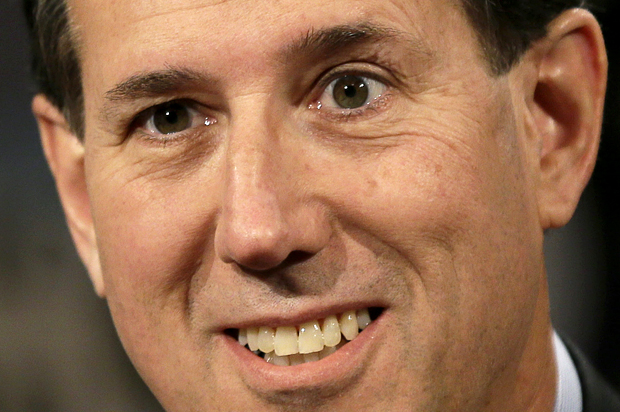What to Do About Pig Poop? North Carolina Fights a Rising Tide
The pork-loving state faces challenges in protecting water from contamination.
PUBLISHED OCTOBER 28, 2014
From the air, the place where bacon comes from is a quilt of fields and woods crossed by roads and winding creeks.
The animals were destined to become honey-cured ham, bologna, smoked sausage, pulled pork, pork chops, bacon bits, and more. The meat would be shipped all over the world.On an overcast day in September, I was buzzing over eastern North Carolina's flat coastal plain in a single-prop Piper Arrow with retired riverkeeper Rick Dove and pilot Bob Epting. From an altitude of 1,200 feet (366 meters), we gazed down at the land of hogs: fields in every direction dotted with long, metal-roofed barns housing thousands of animals—and, shimmering in the faint sunlight, the pink ponds that held their waste.
But before the hogs left the state, they would poop, a lot.
That waste is a lingering, stinky problem for North Carolina and other hog-heavy states like Iowa, Minnesota, Illinois, and Indiana. Those states are the leading suppliers of meat to a nation—and increasingly, a world—with an abiding love of cheap pork. But residents must contend with waste from millions of hogs, which fouls the air near large operations and can contaminate local water supplies with germs and excess nutrients.
The dilemma is particularly acute for the barbecue-obsessed Tar Heel state, where swine sales totaled $2.9 billion in 2012. North Carolina gained national attention in 1999 when drenching rains from Hurricane Floyd caused waste ponds to rupture and flood, contaminating local water supplies. (Read "Carnivore's Dilemma" in National Geographic Magazine.)
Fifteen years after the disaster, the state remains the home of 8.9 million hogs—nearly as many as its human population of 9.8 million—making it the second largest pork producer in the nation. And despite a $17.1 million research project on waste options, it seems no one, in this state or elsewhere, quite knows what to do with all that poop.

Pigs from a farm near Trenton, North Carolina, wait for rescue from floods.
PHOTOGRAPH BY REUTERS
Swollen Lagoons
Until recently, people who raised hogs kept small numbers of animals that roamed in outdoor pens or fields, where their droppings fertilized crops.
In North Carolina, that started changing with industry consolidation in the 1980s. The number of small, diversified farms fell precipitously. Most of the farms that survived did so by going big—raising thousands of animals that spend their entire lives inside barns. Today, Duplin County, North Carolina, the top swine producer in the country, is home to 530 hog operations with a collective capacity of 2.35 million animals. According toa 2008 GAO estimate, hogs in five eastern North Carolina counties produced 15.5 million tons of manure in one year.
To handle all that waste, farmers in North Carolina use a standard practice called the lagoon and spray field system. They flush feces and urine from barns into open-air pits called lagoons, which turn the color of Pepto-Bismol when pink-colored bacteria colonize the waste. To keep the lagoons from overflowing, farmers spray liquid manure on their fields nearby.
The result, says Steve Wing, an epidemiologist at the University of North Carolina at Chapel Hill, is this: "The eastern part of North Carolina is covered with shit."
The Neuse River Air Force
Since 1999, to avoid a repeat of Hurricane Floyd, the state has bought out dozens of hog farms and closed more than 50 waste lagoons located in flood-prone areas.
In addition, hog farmers in North Carolina must follow state permit rules to avoid polluting streams and rivers with lagoon waste. They are not allowed to spray waste on fields when it's raining, for example, or on windy days when the mist could blow into nearby water bodies.
But as the Piper Arrow cruised over hog country recently, Rick Dove said the industry routinely breaks those rules. Peering at the ground below the plane, Dove suddenly spotted something.
"That's illegal," he said, pointing toward a field where an industrial-size sprayer was spouting a stream of pink-tinged waste on a field near a hog farm. Nearby, water from the previous night's rain lay puddled on the ground. As the plane banked to circle the farm, Dove explained that hog operations are not permitted to spray animal waste on fields with standing water.
Dove estimates that he has made more than a thousand flights like this one over eastern North Carolina. He and other volunteer observers and pilots—the self-styled Neuse River Air Force—photograph violations and report them to the state.
Doesn't the state have enough inspectors to do that job?
"No," Dove says. "The problem in North Carolina has always been that there's no enforcement."
Christine Lawson, program manager for animal feeding operations at the North Carolina Department of Environment and Natural Resources, says the hog industry is the subject of much more regulation and oversight than in the 1990s. The state's 16 inspectors visit every hog facility at least once a year to make sure they're following the rules set out in their permits. "We see a very high level of compliance," she says.
But hog farmer Tom Butler says state scrutiny has declined under the current governor, Republican Pat McCrory. He says his most recent inspection amounted to little more than a courtesy call.
"We're surely not inspected like we used to be," he says. "I should be happy about that, but I'm not."
Regulations, he says, keep him on his toes: "We're always busy on a farm. We always have more than we can do. And the first thing we're not going to do is waste management. But if we know that inspector's coming in six months, or unannounced, what are we going to do? We're going to do good waste management."

Flooding from Hurricane Floyd engulfed this hog farm in eastern North Carolina in 1999.
PHOTOGRAPH BY JOHN ALTHOUSE, GETTY
A Threat to Water and Air
Just as in North Carolina, the hog industry in the Midwest has seen an explosion in the number of large hog operations, says Ted Genoways, author of a new book on the industry called The Chain: Farm, Factory, and the Fate of Our Food. Iowa's hog population, for example, has swelled from 15.3 million in 2000 to 20.7 million this year. "It's just gone crazy in the last 30 years," he says.
U.S. pork exports have doubled over the past decade to more than two million tons a year, about 20 percent of total production. The leading buyers are Mexico, Japan, and, increasingly China, which has the world's largest per capita consumption of pork. (See interactive graphic, "What the World Eats")
But the growth in hog populations comes at a cost to the water around them, as scientists have shown in dozens of studies.
They have found evidence that nutrients wash into creeks and rivers from the fields where farmers spray manure or inject it into the soil, as is common in the Midwest. Hog waste is rich in nitrogen and phosphorus, which plants need to grow. But when too many nutrients flow from fields into waterways, they can contribute to harmful algal blooms and fish kills.
Nearby water can also be contaminated by parasites, viruses, hormones, pharmaceuticals, and antibiotic-resistant bacteria in hog waste, studies show.
In just the past two years, waste has spilled on hog farms in Iowa, Georgia, and Illinois. In October, a hog farm in Callaway County, Missouri, spilled 10,000 gallons (37,854 liters) of waste into a stream. In the same month, a lagoon spilled 100,000 gallons (378,541 liters) at a farm in Greene County, North Carolina.
Despite risks to waterways, many large livestock farms go unscrutinized by government inspectors, says Jon Devine, senior attorney for the water program at the Natural Resources Defense Council, an environmental advocacy group. Among the nation's 20,000 large livestock facilities, he says only about 40 percent are regulated under the Clean Water Act, the federal law that governs water pollution.
New regulations could cut pollution, he says, but the livestock industry fiercely resists attempts by the Environmental Protection Agency to monitor it. "It's a tough thing to move on, and so I have seen very little appetite at the federal level or at the EPA to move reasonable regulations forward," he says.
The Neighbors Notice
Then there's the matter of the stench.
Elsie Herring lives on land in Duplin County, North Carolina, purchased by her grandfather, a freed slave, in the late 1800s. Sixty thousand people live in this county, where hogs outnumber humans roughly 39 to one.
In the 1980s, a hog farmer moved in next door to Herring's family and installed two hog barns, a lagoon, and a spray field. The edge of the spray field is just eight feet from her home.
When the farmer sprays hog waste on his field, the wind carries it to Herring's land. The terrible, raw odor, she says, sneaks into her home even when she closes her doors and windows. It gives her a cough and makes her eyes burn.
"It's very, very offensive," she says. "I don't feel comfortable even having people over, because it's embarrassing and humiliating that, you know, you're trying to entertain someone and there's someone eight feet away spraying animal waste on you."
Steve Wing, the UNC-Chapel Hill epidemiologist, says hog operations give off ammonia, methane—a potent greenhouse gas—and hydrogen sulfide, which causes headaches and eye irritation. They also release endotoxin, an allergen, and at least a hundred volatile organic compounds, many of which contribute to the odor of hog farms.
In a study that began in 2003, Wing and a team of researchers set up air pollution monitors to measure hydrogen sulfide, endotoxin, and small particles in neighborhoods in eastern North Carolina within 1.5 miles of hog farms. They recruited 101 volunteers to record their physical symptoms and measure their own blood pressure and lung function.
When the researchers crunched the data, they found that when air pollution worsened in a given site as winds shifted, so did people's symptoms, including eye irritation, wheezing, nausea, and elevated blood pressure.

A pig stands on the roof of a car to escape Floyd's floodwaters near Burgaw, North Carolina.
PHOTOGRAPH BY JOHN ALTHOUSE, GETTY
The Farm of the Future?
Hog farmer Tom Butler says he knew nothing about how his operation could affect the environment when he began raising the animals 20 years ago.
In late September, rain was falling steadily on Butler's operation, a 130-acre farm in Lillington, North Carolina, that holds 7,500 hogs. The odor of animals, musky but not overpowering, hung in the air.
When farm manager Dave Hull opened the door of one of the operation's ten barns, hundreds of hogs—which had been sitting nose-to-tail in their pens—abruptly stood up and unleashed a cacophony of grunts and squeals.
Undeterred by the noise, Hull pointed to slats on the floor of the barn. When the hogs defecate, he explained, it falls through the slats. From beneath the barn, the waste is flushed to a one-million-gallon manure digester, where bacteria decompose it for 21 days, producing methane in the process.
The gas flows through skinny yellow pipes to a nearby generator building, where it's burned to create electricity that the farm sells to a local cooperative. The remaining waste is piped to two overflow lagoons that—unlike most lagoons in the state—are topped with green plastic coverings.
The result? The covers trap odors, making the operation less smelly. Rain falling on the farm isn't contaminated by lagoon waste. And the farm is transforming waste into electricity-generating enough to power 90 refrigerators.
The only trouble with the setup, Butler says, is the price tag: more than one million dollars. Grants from the USDA, North Carolina Green Business Fund, Natural Resources Conservation Service, and North Carolina Farm Bureau covered about three-quarters of the cost, with the rest coming out of Butler's pocket. He hopes to recoup the total investment by 2022.
"A lot of people think this is foolishness, and so far they've been right," Butler says.
Across the United States, only 29 U.S. swine operations use digesters like the one at Butler Farms.
Mike Williams, director of the Animal & Poultry Waste Management Center at North Carolina State University, led a $17.1 million research project to examine ways to cut air and water pollution from hog waste.
As Williams sees them, hog farms in North Carolina are better managed than they were in the 1990s. But he says in the long run, the lagoon and spray field system isn't sustainable, because nearby fields simply can't absorb the volume of nutrients large hog farms produce.
He says technological solutions—like the anaerobic digester at Butler Farms—could address environmental concerns. So could burning the poop or putting it through a treatment system the way municipalities clean human waste.
But though prices for those technologies have fallen, the industry won't adopt them until the cost is equal to or less than that of the current system. "I am cautiously optimistic that we're going to get there," he says. "I'm frustrated that there hasn't been more progress."
























